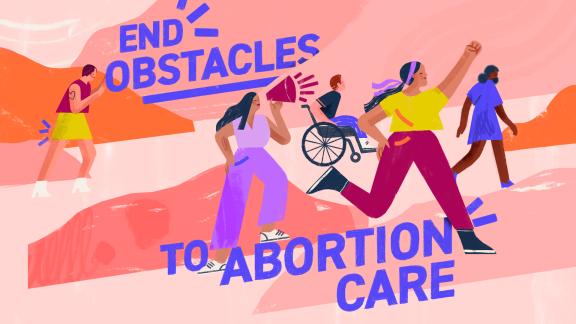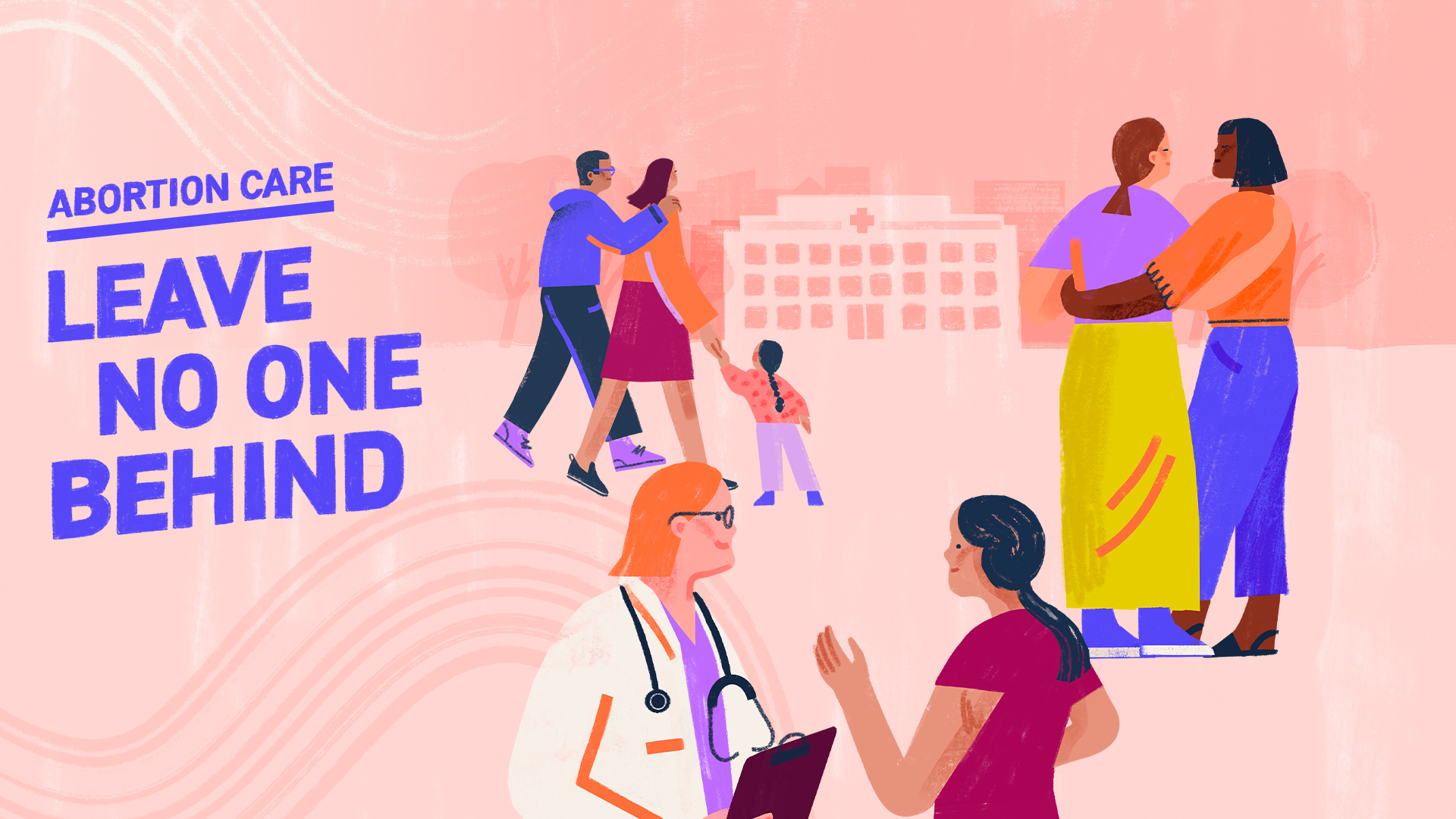Laws push costs onto women
The state’s failure to decriminalise abortion carries a heavy financial burden for women and girls because it means that there is no cost coverage for abortion on request. “Abortion is treated unlike any other healthcare issue in Germany,” and is excluded from the mandatory health insurance system in most cases. The local federal state pays if a person’s income is below €1,466 per month (with a higher threshold for those with children), but the red tape is laborious and time-consuming. “So this is another administrative step that people on low incomes have to fit into the timeframe before they can access care.”
People above the income threshold face costs of €350-600. Prices vary by clinic, method or insurance (abortion by medical pills is least expensive, surgical procedures cost more). Access is a postcode lottery, with regional differences in available options. Overall, most abortions in Germany are surgical, with 9% using the curettage method no longer recommended by the WHO. In 2023, pills were used for 42% of abortions, compared to 76% in France, despite being the preferred choice of many women in Germany (as elsewhere) because they reduce stigma and harassment, and allow greater privacy and autonomy, particularly if self-managed at home. Another problem is that pills are only available in Germany up to the end of week 7, whereas the WHO recommends them as safe and effective up to 12 weeks.
Forced to travel to find care
The cost of travel for appointments, lost earnings, childcare, and overnight hospital stays (if required) ratchet up costs. “There are parts of the country where it’s very difficult to find a provider or else where you have to travel quite a long way to access abortion care,” Stephanie says. “The 16 federal states are supposed to provide adequate coverage of abortion services, but the law doesn't define what that means.” Many hospitals provide no abortion services. Overall, the number of facilities reporting abortion provision to the Federal Statistics Office has fallen by 46.7% in just under two decades, from 2050 in 2003 to 1092 in 2021. Many areas with inadequate or zero local abortion care are concentrated in certain parts of the country or border each other, thereby enlarging the area where care is unavailable. Lengthy waiting times at clinics due to a scarcity of doctors also increase costs.
Another challenge is Germany’s gender pay gap – one of the worst in Europe, with women earning 18% less than men and more likely to work part-time and in lower paid sectors. According to recent research, “it’s difficult for every fifth woman to cover the costs around abortion,” Stephanie says.
The crisis is spurring some women to look outside formal healthcare for solutions. Around 2,000 women every year turn to Women on Web, a global medical abortion telemedicine service, and every year over 1,000 travel to the Netherlands for care.
Marginalised women face steeper barriers
Factors such as migration status, ethnicity, age, disability and literacy level can increase barriers to abortion care. The landmark ELSA study reports that victims of domestic violence often experience poor medical treatment at GP clinics when trying to access abortion care. Asylum seekers, refugees, and undocumented migrants also face barriers.
“It’s not easy for refugee women who are accommodated in state housing,” Stephanie says. Living apart from the rest of German society makes it “more difficult to find information about counselling and doctors’ services and to access those services.” Across German healthcare there is a shortage of translation services, which becomes even more problematic when discussing sensitive issues like abortion, she adds.
The cost of contraception is another factor behind Germany’s family planning crisis. Contraception is only free up to the age of 22, and people on social benefits receive only €21 per month to cover all healthcare needs, including contraception.
Legal threats deter doctors and block information
Germany’s abortion laws deter many doctors from involvement in abortion care. The fear of prosecution is a major disincentive, and the legal situation forces them to jump through multiple hoops, including updating the Federal Statistical Office quarterly on abortion numbers. Abortion care cost coverage also uses a different, “more onerous” system to other healthcare services, and “what doctors get paid for providing abortions just barely covers their costs,” Stephanie says.
Until it was fully scrapped two years ago, Paragraph 219a of the criminal code even forbade doctors from publicising that they provide abortion care, under threat of prison or fines. Since the law changed, few doctors have signed up to the new German Medical Association list of doctors providing care – “and when you ask them why, it’s that they don’t want that exposure,” or fear harassment by anti-abortion campaigners, Stephanie says. “So those doctors won’t appear on any list, they don’t have it on their website, so [...] you may have a doctor on the next street providing care but you won’t know.”
Few junior doctors are coming through the ranks: “doctors who provided abortion services in the past are going into retirement, and new doctors succeeding them do not necessarily follow in their footsteps.” Medical schools treat abortion care as an optional add-on rather than core to training. “Even when you specialise in gynaecology, you don’t necessarily get adequately trained in abortion care provision,” Stephanie says. “You’ll find out about the law and the ethics side of it, but you don’t necessarily learn the techniques and how to specifically support women.”
Urgent call for reform
Reform is long overdue. Germany “can no longer afford to have laws that are so convoluted and patronising and paternalistic,” Stephanie says. Outdated laws, falling doctor numbers, the increasing scarcity of care, and growing costs are creating a crisis in sexual and reproductive health and rights – and the state’s intrusive sway over women’s lives and health should have no place in a modern progressive state.
“Really something needs to be done, because if you project this trend forward, it’s going to get worse and worse,” Stephanie says. Legislation and social attitudes urgently need to shift to empower doctors to provide vital healthcare with confidence.
Pro Familia wants to see legal reform that would “bring an end to all the barriers – no more mandatory counselling and waiting periods, but instead cost coverage, the integration of abortion into healthcare provision, the strengthening of counselling services on a voluntary basis, all of those things.” Doctors back law reform: “A sizeable number [of doctors] said that if the legal regulation changed, if abortion was no longer criminalised, they would be willing to provide care,” Stephanie says.
Crucially, too, reform is “not just about enabling people to navigate unintended pregnancies [but] about reproductive self-determination and creating a society where this is understood to be central to our democracies and to gender justice.” The law should be a “living instrument” that evolves over time to support people’s needs.
The call for change is growing louder among politicians and medical experts as well as organisations like Pro Familia. In April 2024, an expert commission set up by the government to review existing laws announced that Germany should drop all restrictions on abortion up to 12 weeks and decriminalise it in the second trimester.
So far, however, the government has taken no further action, and opposition to abortion is growing more aggressive, well-funded, and strategic. The rise of the right-wing, anti-abortion Alternative for Germany (AfD) is another threat, particularly as abortion counselling is paid for regionally and locally rather than federally: the political direction taken locally could cut access to funding for counselling, and so cut access to care. Legal analysts warn that the law enables backsliding on reproductive rights.
With the clock ticking on the current parliamentary period, Pro Familia is “really insisting that abortion law reform must happen now,” before federal elections in September 2025. In October, the organisation alongside numerous other civil society organisations will publish a draft law setting out what reformed abortion laws could look like, “in line with constitutional law, WHO guidelines and human rights standards.”
“I think we need to really look at what law we want for our country that we can be proud of. What is a good law, not just how do we minimise the effect of a bad law? And how do we want people who need care to be best supported?”
***
Words by Imogen Mathers for IPPF EN
Illustration by Alissa Thaler for IPPF EN

This content is funded by the European Union through the Citizens, Equality, Rights and Values Programme.
Disclaimer: Views and opinions expressed are those of IPPF EN and do not necessarily reflect those of the European Union or the European Commission. Neither the European Union or the European Commission can be held responsible for them.













